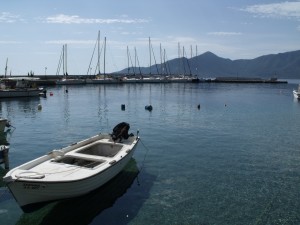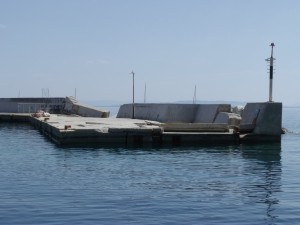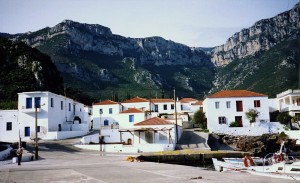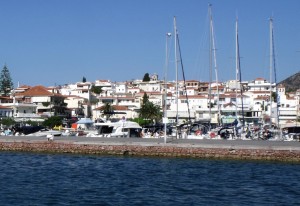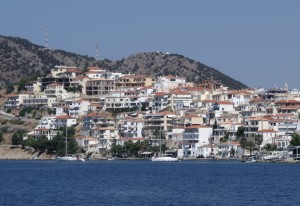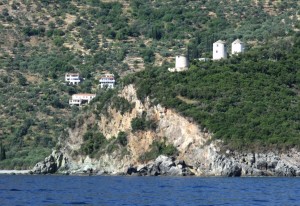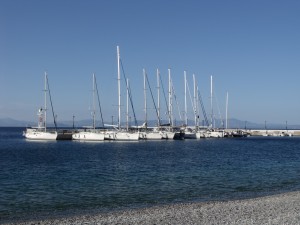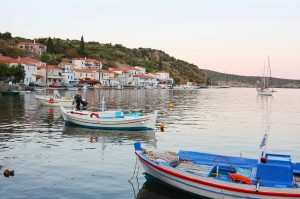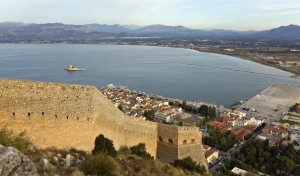If you’re coming from the east, it can be hard to make out the harbour, especially as the sun lowers in the west. Look out for the flat topped mountain and head slightly south of that and eventually you will see a telephone mast high on top the hill, or the bright blue hotel.
If coming along the coast, the harbour is at the south end of the long beach so once you’ve found that, the rest is easy.
The harbour entrance is plenty wide and boats normally berth stern or bows to. The quay is quite high so depending on the design of your boat, you may find it easier to get off if you go bows to.
At quieter times, boats sometime go side on, especially towards the inner end of the quay where there are underwater concrete blocks up against the quay. Watch for these if going in stern to.
The harbour is very deep in the centre, especially nearer the entrance, so you will need plenty of anchor. Holding is usually good once you’ve caught hold but it does sometime take a couple of tries to get the anchor to set.
Water is available on the quay – the waterman will sometimes come and ask if you need any. There is a port police office but it’s rare to see them on the quay.
More for interest than because it has any affect on your mooring (other than reducing the available space), I thought it was worth showing a couple of pictures of the damage caused by the severe storm in February 2012, when winds allegedly reached force 11. Don’t panic, that’s extremely unusual even for winter storms and the change of winds like that during your holiday are extremely unlikely to put it mildly.
Unfortunately, it took many years to acquire the EU funding to “improve” the harbour around 2004. I fear it will take many more before any cash appears to rebuild the damaged section of the quay.



